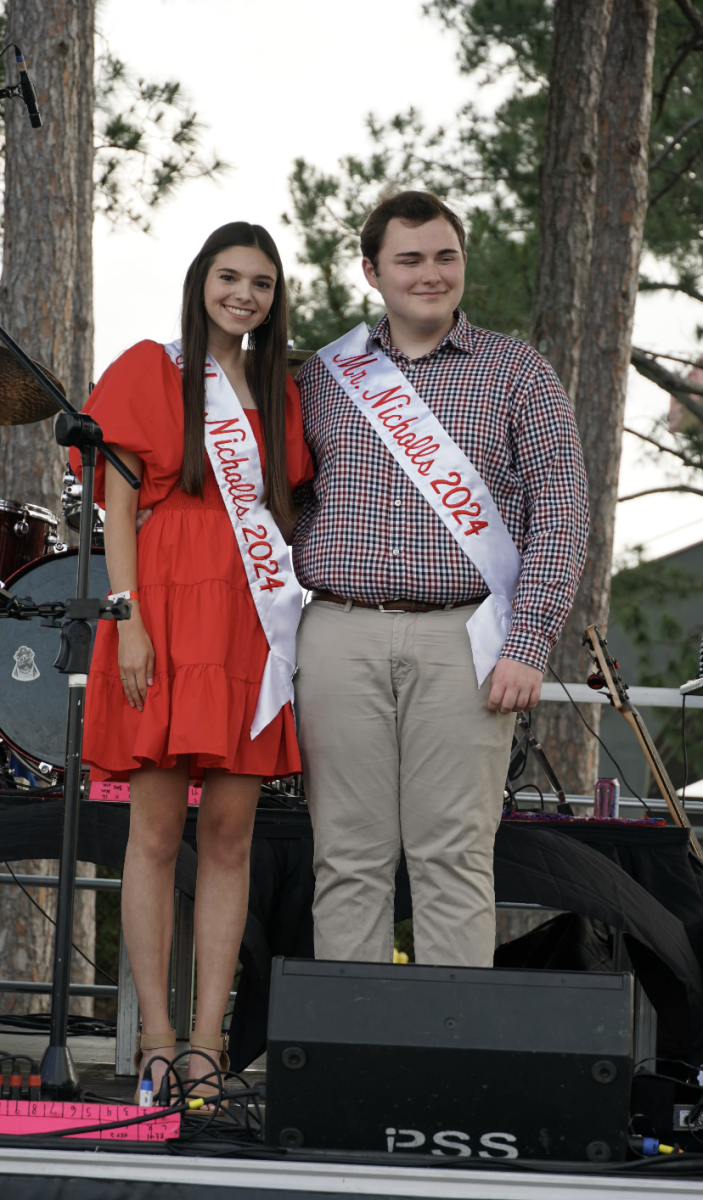For the average Joe, working in a cemetery is not you’re A-list job. But for New Orleans native Robert Florence, working in a cemetery is more than a job. It’s a way of life. Florence always was attracted to the city’s cemeteries. While pursuing a position with the National Park Service in the swamps of Barataria Bay, a tour leader job opened up at a French Quarter touring agency. At the age of 25, he became a tour guide for the historic district and neighboring St. Louis Cemetery No. 1.
Eventually, he started his own tour business known as “Historic New Orleans Walking Tours.” Five times a week, he leads numerous groups of tourists and visitors around several of New Orleans’ most famous cemeteries. Throughout his 20-year career, Florence says he has led more than 20,000 tourists on tours of the cemeteries.
The walking tour, which costs $15, starts at the St. Louis No. 1 in the French Quarter, then moves on to the St. Louis No. 2 cemetery three blocks away on Claibourne Avenue. The tour lasts about two hours.
On this particular day, Florence leads a group of 25 college students from the University of Wisconsin through the vast cemeteries. The students are visitors for spring break.
“We wanted to come down here and see what New Orleans is all about,” says 20-year-old Kristen Smart. “What better way to do that than to visit its world famous cemeteries.”
The cemeteries are one of the city’s biggest tourist attractions. Florence estimates close to 100,000 tourists visit the graveyards each year. Known as the “Cities of the Dead,” New Orleans’ cemeteries are noted for their unique tombs. The tombs serve as monuments to the 18th, 19th and early 20th centuries and are a major part of the city’s unique heritage.
“You can learn about voodoo, yellow fever, the Civil War and how we adapt to our environment,” Florence says about the cemeteries. “They’re architecturally and sculpturally unique and really something to see. That’s why tourists from throughout the world travel from near and far to come see them. It is a very mysterious place for anyone. It is even spooky in broad daylight.”
The rich architectural schemes of New Orleans’ 42 cemeteries are well known and distinct from other cemeteries. Predominantly done in classical revival style, the skylines of the cemeteries are unique. Elaborate stone tombs are adorned with ironwork statues and carved marble markers.
“No place on earth has the style of cemeteries as seen in New Orleans,” Florence says while holding a map of New Orleans. “That’s what makes it so distinct.”
The walking tour starts with a visit to St. Louis No. 1. Arguably the most famous cemetery in New Orleans, St. Louis No. 1 is well-known by legions of tourists around the world.
“St. Louis No. 1 is the cemetery all the tourists want to see, so why not give them what they want and show it to them first,” Florence says. “It’s the cemetery that tourists ask the most questions about.”
St. Louis Cemetery No. 1 contains approximately 700 tombs, tomb ruins and markers in small city-like subdivisions. Although there are a variety of tomb types and styles, most of the tombs are made of soft, handmade brick with high lime content mortar. The lime helps the tombs endure the muggy New Orleans humidity.
St. Louis No.1 is the resting place of many prominent New Orleans politicians, war heroes and musicians. Some of the deceased located here include the first mayor of New Orleans, Etienne Bore; the first African-American mayor, Ernest “Dutch” Morial; and American chess champion, Paul Morphy.
But the most famous, and clearly the most interesting, in St. Louis No. 1 belongs to Voodoo Queen Marie Laveau. The most visited tomb in the city, Florence explains it is one of the most visited graves in America.
“Only Elvis Presley draws more visitors to his grave,” Florence says with a smile.
People visit Laveau’s tomb to light candles, perform various religious acts and leave offerings. The tomb is covered with rosaries, flowers, coins and various other offerings.
“Everything from movies, books, documentaries and television shows has been made about her tomb,” Florence says to the group. “Her tomb is the Mecca for all the voodoo world.”
Many traditions go along with visiting Laveau’s tomb. One calls for visitors to tap three times on the tomb and mark three Xs with a piece of brick or chalk. After that, the visitors may then ask Marie for a favor.
“It’s a pretty popular tradition,” Florence says. “The tourists love it. You can see they get a thrill out of being a part of something so cool.”
Before leaving the tomb, Florence warns the students to respect of the power Laveau’s tomb.
“Marie Laveau was a voodooienne,” he says in a deep, sophisticated voice. “She was the queen of them all. She could keep anybody from harming you, and she could do anything you wanted done to anybody. Marie Leveau is a name respected by everybody and dreaded by a lot of people.”
After leaving St. Louis No.1, Florence leads the group three blocks up Claibourne Avenue to the St. Louis No. 2 cemetery created in 1823.
The architecture of the tombs of St. Louis No. 2 is strongly reminiscent of the tombs of Pere Lachaise cemetery in Paris, France.
Although St. Louis No. 1 is older in years, St. Louis No. 2 appears more weathered. The grass surrounding the graves is unkept, and the tombs are darkened by the relentless Louisiana humidity. Most of the tombstones are faded and hard to read.
“Time has sort of forgotten No. 2. Out of all the cemeteries, it is the most deserted,” Florence explains.
Many notable citizens of 19th and 20th century New Orleans are laid to rest here such as the Blessed Mother Henriette DeLille, a candidate for sainthood. A number of notable jazz and rhythm and blues musicians are also buried here, including Danny Barker and Ernie K. Doe. Also entombed in No. 2 is Dominique You, comrade of Jean Lafitte and notorious pirate who assisted in the defense of the city against the British in the Battle of New Orleans.
Many burials still take place in St. Louis No. 2.
“Just four weeks ago, there was a burial for a former jazz player in this cemetery,” Florence tells the group while pointing to the tomb.
After visiting the St. Louis No. 2 cathedral, the cemetery tour comes to an end. At this time, the students ask Florence any remaining questions about New Orleans’ famous cemeteries.
The students appear excited about what they saw in the cemeteries.
“This clearly isn’t like anything we have in Wisconsin,” one says.
Florence closes by telling the students about his charity, Save Our Cemeteries, Inc. Founded in 1974, the charity helps in the effort to prevent the demolition of nine city blocks of wall vaults surrounding most of the three squares of St. Louis II. Since 1974, the charity has broadened its focus from the historic cemeteries of New Orleans to include those of the entire state of Louisiana.
“We want to save what history we have left in the cemeteries,” Florence adds.
Since its founding, the charity has raised millions of dollars which have been utilized in the city’s cemeteries. Save Our Cemeteries, Inc. is dedicated to the restoration and preservation of the city’s historic cemeteries but also focuses on the education of both residents and visitors on the importance of preserving one part of New Orleans’ cultural and architectural heritage-its cemeteries.
“New Orleans has been around for 250-plus years,” Florence says. “Behind each off these tombs is a story. We hope to encrypt the tales behind each one. And in it, add our new chapter of history into it.


![Assistant coach Cody Livingston [#53] talking with pitcher Nico Saltaformaggio [#38] on the mound(5/12).](https://thenichollsworth.com/wp-content/uploads/2024/05/LivingstonNicoHuddle-vs-Lamar-1200x800.jpg)




